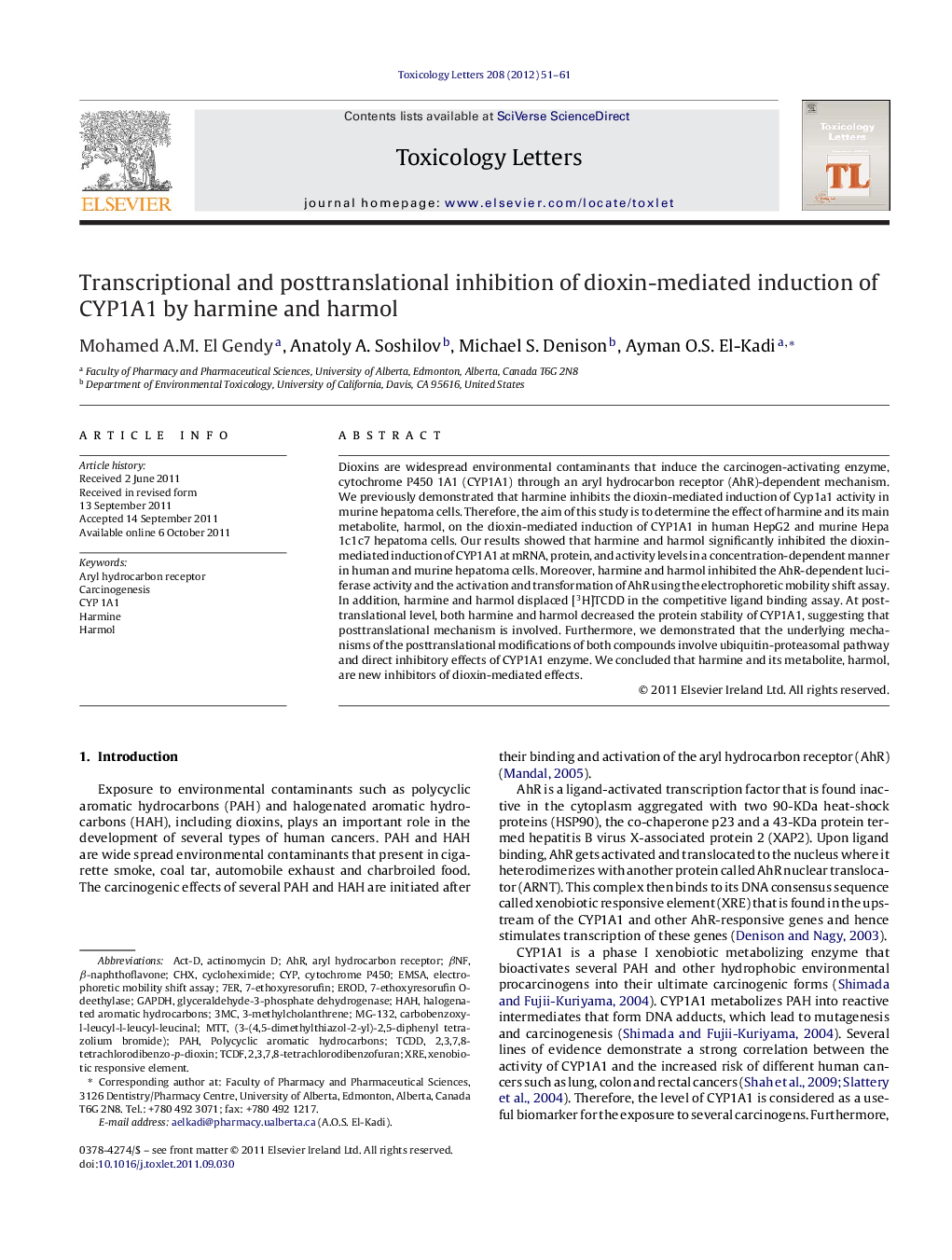| Article ID | Journal | Published Year | Pages | File Type |
|---|---|---|---|---|
| 2599980 | Toxicology Letters | 2012 | 11 Pages |
Dioxins are widespread environmental contaminants that induce the carcinogen-activating enzyme, cytochrome P450 1A1 (CYP1A1) through an aryl hydrocarbon receptor (AhR)-dependent mechanism. We previously demonstrated that harmine inhibits the dioxin-mediated induction of Cyp1a1 activity in murine hepatoma cells. Therefore, the aim of this study is to determine the effect of harmine and its main metabolite, harmol, on the dioxin-mediated induction of CYP1A1 in human HepG2 and murine Hepa 1c1c7 hepatoma cells. Our results showed that harmine and harmol significantly inhibited the dioxin-mediated induction of CYP1A1 at mRNA, protein, and activity levels in a concentration-dependent manner in human and murine hepatoma cells. Moreover, harmine and harmol inhibited the AhR-dependent luciferase activity and the activation and transformation of AhR using the electrophoretic mobility shift assay. In addition, harmine and harmol displaced [3H]TCDD in the competitive ligand binding assay. At posttranslational level, both harmine and harmol decreased the protein stability of CYP1A1, suggesting that posttranslational mechanism is involved. Furthermore, we demonstrated that the underlying mechanisms of the posttranslational modifications of both compounds involve ubiquitin-proteasomal pathway and direct inhibitory effects of CYP1A1 enzyme. We concluded that harmine and its metabolite, harmol, are new inhibitors of dioxin-mediated effects.
Graphical abstract.Figure optionsDownload full-size imageDownload as PowerPoint slideHighlights► Harmine and its metabolite, harmol, inhibit the dioxin-mediated effects. ► Harmine and harmol inhibit the carcinogen-activating enzyme, CYP1A1. ► Harmine and harmol act at transcriptional and posttranslational levels.
